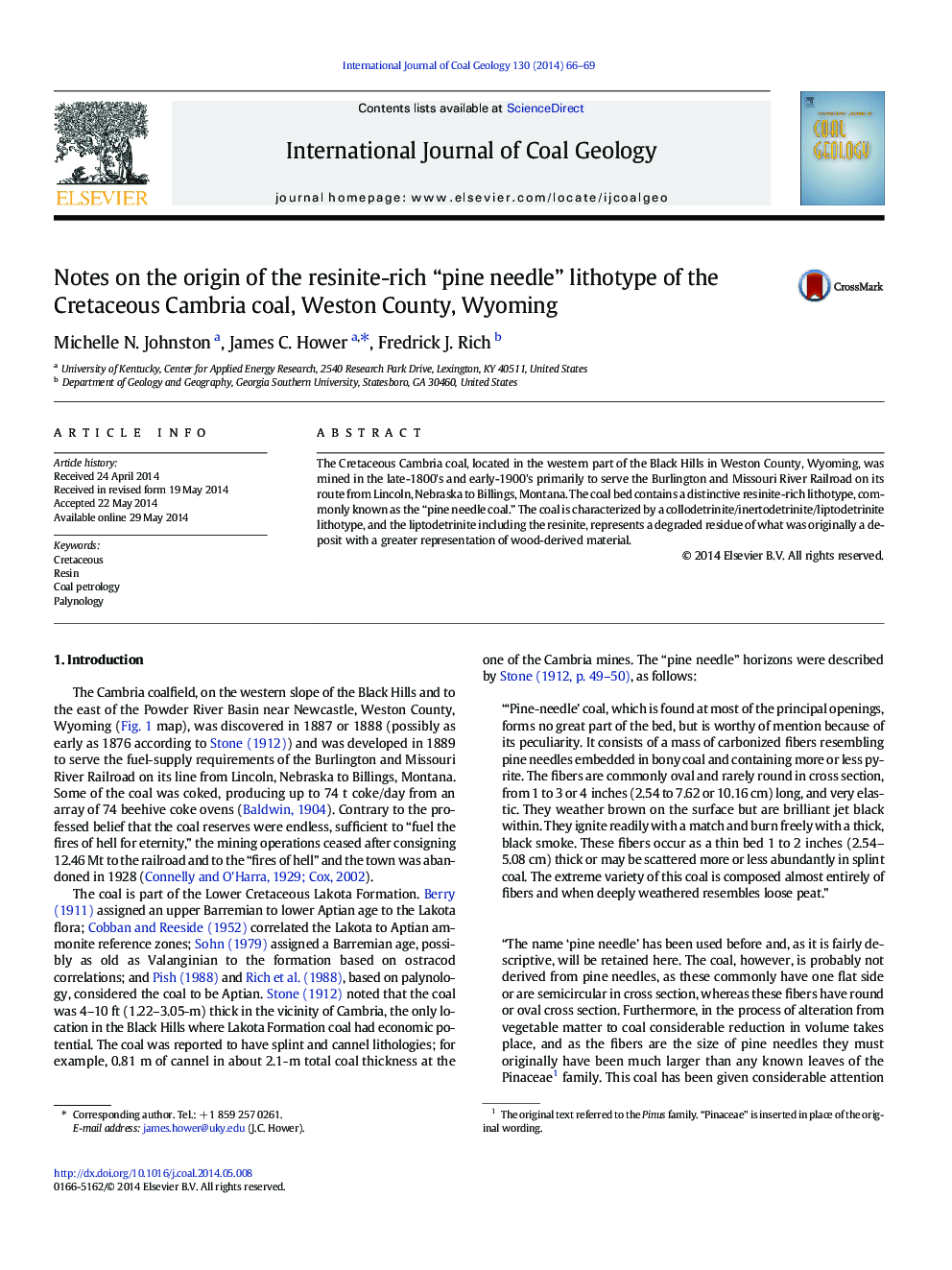| Article ID | Journal | Published Year | Pages | File Type |
|---|---|---|---|---|
| 1753085 | International Journal of Coal Geology | 2014 | 4 Pages |
Abstract
The Cretaceous Cambria coal, located in the western part of the Black Hills in Weston County, Wyoming, was mined in the late-1800's and early-1900's primarily to serve the Burlington and Missouri River Railroad on its route from Lincoln, Nebraska to Billings, Montana. The coal bed contains a distinctive resinite-rich lithotype, commonly known as the “pine needle coal.” The coal is characterized by a collodetrinite/inertodetrinite/liptodetrinite lithotype, and the liptodetrinite including the resinite, represents a degraded residue of what was originally a deposit with a greater representation of wood-derived material.
Related Topics
Physical Sciences and Engineering
Earth and Planetary Sciences
Economic Geology
Authors
Michelle N. Johnston, James C. Hower, Fredrick J. Rich,
